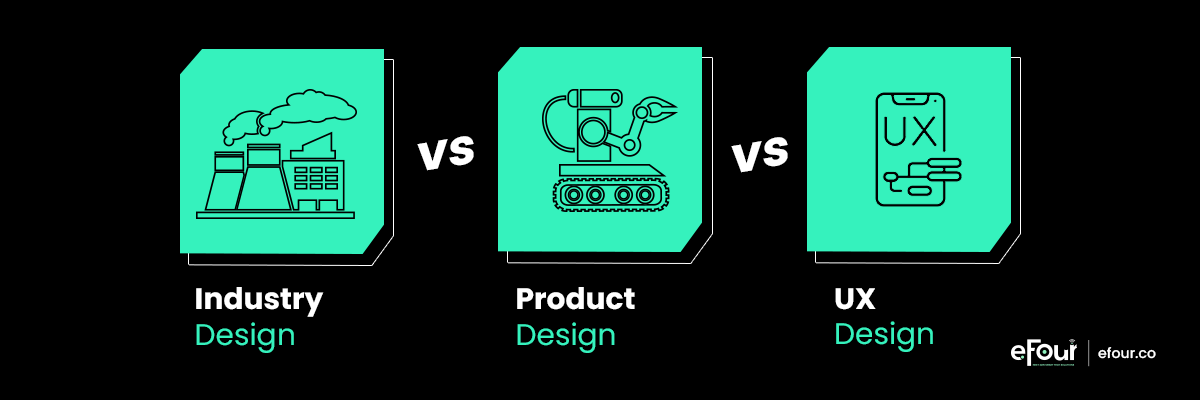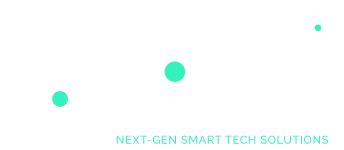
This blog is your guide to learn everything about the popular battle; industry design Vs product design Vs UX design.
When we talk about an ideal product, there are many thoughts racing through our minds. Out of which, design is arguably the most important one. We are now in a stage where product design is appreciated tremendously and driven-product design keeps the company afloat and needless to say is a big benefit over competitors.
The design industry has made a lot of eyes turn in its direction, and there is now a myriad of designers with different skill sets and responsibilities to live up to Industry designers, product designers, and UX designers. Albeit, “How different are these job roles?” has always baffled people. Industrial design vs product design – how both of them work has always made people curious.“ And today, we’ll put this case to rest.
What is Industrial Design?
Before getting to the final showdown of industrial design vs product design, let’s understand the definition first. Industrial design is the course of design applied to large-scale manufacturing. It is tied in with exploring methods and making ideas for the assembling of a product.
So industrial design promotes the work done in developing the product designs and prepares them for assembling, exploring products and systems, cooperation and service with business esteem at its center. Industrial design vs product design – these two elements will be explained thoroughly in the following paragraph.
What is Product Design?
Depending on who we ask – and their set of experiences, their job, and the excursion they took to get where they are currently – industrial design vs product design and the definitions for ‘product design’ range from attention on making theoretical renders to the whole course of production.
A product design engineer looks at the issues that clients face and attempts to track down answers for them. This is like a UX designer, however dissimilar to UX designers who work from the front-end and attempt to make the interaction as easy to use as could be expected, product designers generally work from the back-end to tackle issues. The hoopla regarding product design vs UX design is not just a shot in the dark, but it’s substantial.
A product design engineer might have a look at the phone and notice that it tends to be advanced quicker. They work from the back end to make the cell phone run quicker and satisfy clients in a roundabout way by tackling an issue.
So, now that we’ve understood the confusion regarding industrial design vs product design, let’s check out product design vs UX design.
What is UX Design?
UX design is liable for the function, the versatility of the product, and the feelings it summons in clients. The more clear the interface, the simpler it is for the client to come by the outcome and make the designated move. User Experience(UX) is the experience of working with the interface.
Client experience relies upon different parts: website engineering, visual communication, clear text, and responsiveness of the interface to explicit client activities. Since client experience is theoretical, UX design includes finding out about their propensities, prototyping conduct, and testing.
Similarities Between Industry Design, Product Design, & UX Design
When it comes to Industrial design, it involves focusing on mass production. Product design is the development of user experience design. Many individuals accept that UX designers are more centered around user needs, while product designers are more centered around the blend of business needs and user needs.
In any case, as a matter of fact, this idea is off-base! User experience designers likewise need to add business requirements, and they additionally need to integrate business requirements into the general design. When thinking about industrial design vs product design, not many of us have wondered about the similarities.
Differences Between Industrial Design vs Product Design & UX Design
Despite some certain similarities, Product designers have a fair couple of contrasts in their work specs. Perhaps the most effective way to distinguish between these three jobs is to take a look at the inquiries they pose. Industrial design vs product design – these elements have been explained thoroughly but let’s understand the three of the design terms significantly and the difference between them.
A UX designer would say: “Is this product simple to use?” But a product designer would say: “Is this product feasible in the ongoing economy?” An Industrial designer would join the party and say: ”Does the product have variations?”
When it comes to UX, you’d inquire, “How would I make my design user-friendly?” In product design, you’d inquire, “How would I make my design financially savvy?” And in Industrial design, you’d inquire, “How would I make the product more efficient?”
From the distinctions in these inquiries, you can check that the three designers have various needs. In UX, the need is the ease of use. In product design, it’s the process, business, cost, and brand. Lastly, in industrial design, the quality-driven approach is of the utmost importance.
A UX designer will recognize the issues. The product designer will propose solutions. Industrial designers will make sure to use their dexterity. Product design vs UX design – this question will be solely explained later.
The overall agreement is that contrasted with UX or UI designers, product designers, and industrial designers have a more extensive scope of abilities, and in this manner a more extensive scope of obligations within the task. This is by and large reflected in the compensation, with product designers frequently getting paid more because of more popularity. The battle of product design vs UX design will be legendary.
The typical compensation for a product designer in the U.S. is $110,164; the typical compensation for a UX designer and industrial designer is commonly lower than this. This is all family members — it depends on the company, and the size of the undertaking!
What Skills Does An UX Designer Require?
While analyzing UX designer jobs on Indeed and Glassdoor, we observed that normal necessities include:
SEE ALSO: Connect with UI/UX Design Agency
What Skills Does A Product Designer Need?
In light of different work postings found on Indeed and Glassdoor, a portion of the necessary skills for a product engineer job include:
SEE ALSO: Develop Market Winning Products with efour – Get in Touch
What Skills Does An Industrial Designer Need?
There are some common skills between a product designer and an Industrial designer. The skills for an industrial designer job include:
SEE ALSO: Connect with Industrial Design Agency
Wrapping Up
To put things into perspective, the long battle of industrial design vs product design and product design vs UX design has been conveyed here. And with that being said, knowing everything about these different designers, it’ll be good for you to decide what you want to do with your business.
Frequently Asked Questions
Product design is all about developing products that understand and meet the needs of its users by using data analysis, business strategy, and proper planning.
Using computerized design techniques is not something most businesses would like to get on board with.
You need to be able to conceptualize different methods and having done a course in product designing can easily get you into this field.
Product design engineering encompasses creativeness, technical design skills, engineering science, and analysis to create products.
Identifying the marketing opportunity and skillfully working on it.
It refers to the complete act of understanding and defining a product’s features.
Industrial design refers to the efficiency of a product and product refers to the product availability and features regarding the product.




